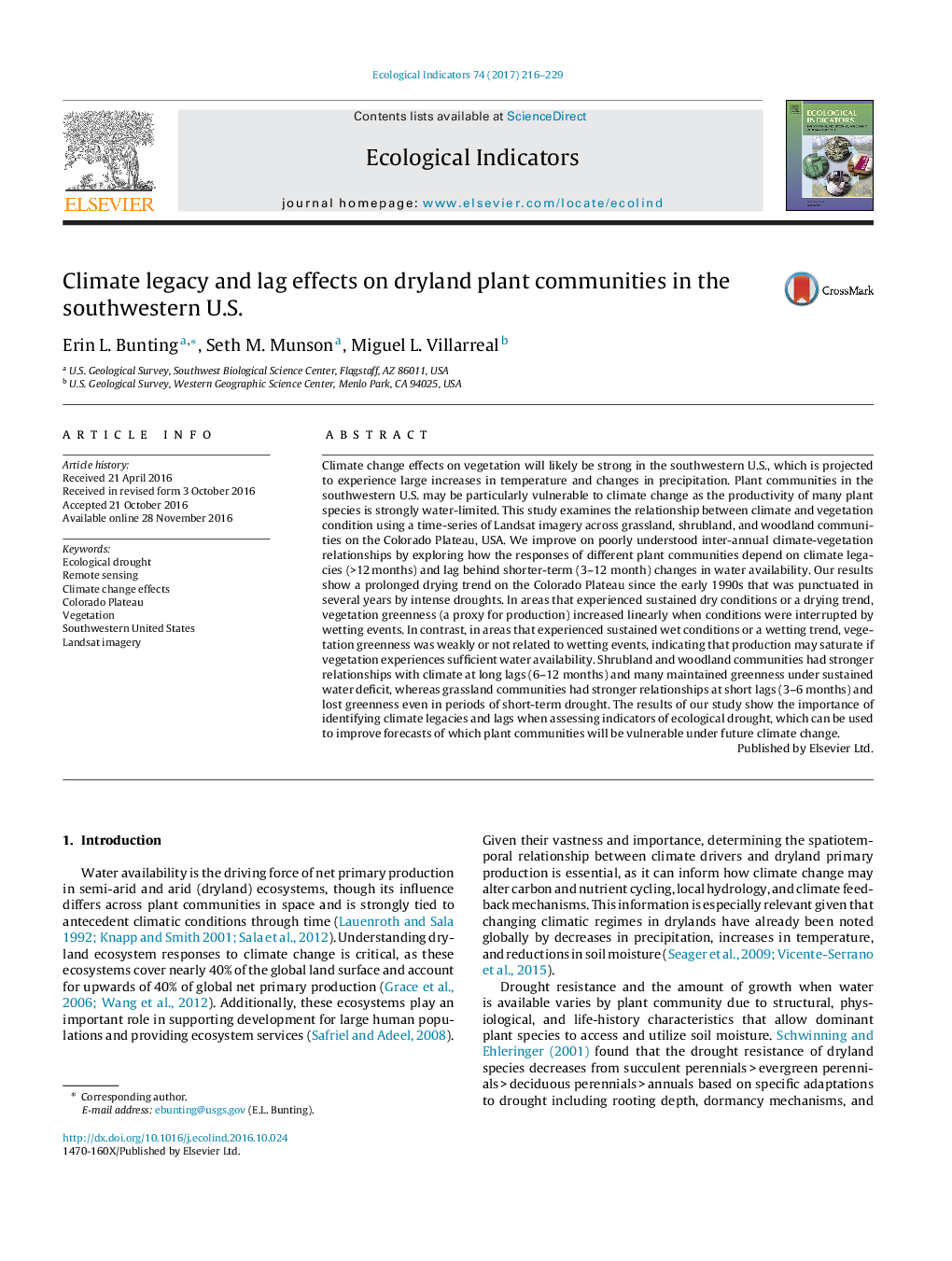| کد مقاله | کد نشریه | سال انتشار | مقاله انگلیسی | نسخه تمام متن |
|---|---|---|---|---|
| 5741850 | 1617128 | 2017 | 14 صفحه PDF | دانلود رایگان |
Climate change effects on vegetation will likely be strong in the southwestern U.S., which is projected to experience large increases in temperature and changes in precipitation. Plant communities in the southwestern U.S. may be particularly vulnerable to climate change as the productivity of many plant species is strongly water-limited. This study examines the relationship between climate and vegetation condition using a time-series of Landsat imagery across grassland, shrubland, and woodland communities on the Colorado Plateau, USA. We improve on poorly understood inter-annual climate-vegetation relationships by exploring how the responses of different plant communities depend on climate legacies (>12Â months) and lag behind shorter-term (3-12 month) changes in water availability. Our results show a prolonged drying trend on the Colorado Plateau since the early 1990s that was punctuated in several years by intense droughts. In areas that experienced sustained dry conditions or a drying trend, vegetation greenness (a proxy for production) increased linearly when conditions were interrupted by wetting events. In contrast, in areas that experienced sustained wet conditions or a wetting trend, vegetation greenness was weakly or not related to wetting events, indicating that production may saturate if vegetation experiences sufficient water availability. Shrubland and woodland communities had stronger relationships with climate at long lags (6-12 months) and many maintained greenness under sustained water deficit, whereas grassland communities had stronger relationships at short lags (3-6 months) and lost greenness even in periods of short-term drought. The results of our study show the importance of identifying climate legacies and lags when assessing indicators of ecological drought, which can be used to improve forecasts of which plant communities will be vulnerable under future climate change.
Journal: Ecological Indicators - Volume 74, March 2017, Pages 216-229
